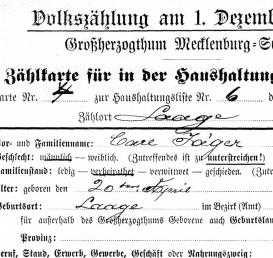Gathering personal information in nineteenth-century census taking was generally performed by enumerators going from door to door, noting down the required information in bound lists they carried along with them. But European statisticians also probed other means of census taking. Self-inscription was introduced in Belgium and Great Britain in the early 1840s, and the method itself as well as the paper forms required to implement the procedure became during the following decades much-debated issues.
This project examines the tools and methods of self-inscription in Prussia, Germany’s biggest and most powerful state, where census statisticians implemented self-inscription via individual “Zählkarten”—or “counting cards”—in 1871. The project illuminates the epistemological grounds on which Prussian statisticians propagated the novel method. I argue that scientific ideals of accuracy and precision prevalent in the sciences at the time motivated Prussian census officials to initiate self-inscription via counting cards. They sought to realize a scenario of inscription unmediated by enumerators, in which the census form alone was to yield truthful information from the respondents. Integral to this reasoning, Prussian officials envisioned unreserved public participation as a crucial precondition for all data to be provided in the required pureness. For this reason, they strove to engage the populace in what they perceived to be a collective project yielding the young German nation’s self-depiction, not unlike an all-encompassing citizen science project.
The project explores the bureaucratic means of implementing scientific ideals and practices in gathering personal census data. It offers an in-depth analysis of the media, technologies, and manpower that census takers deployed to implement self-inscription, to show how fundamentally the method changed the tectonics of power in the act of enumeration. Zooming in on the theoretical and methodological considerations as well as the actual legwork to create at-home scenarios producing what officials called self-inscribed Ur-data, the project lays bare the epistemic—as well as social and political impact of being “true to form.”

